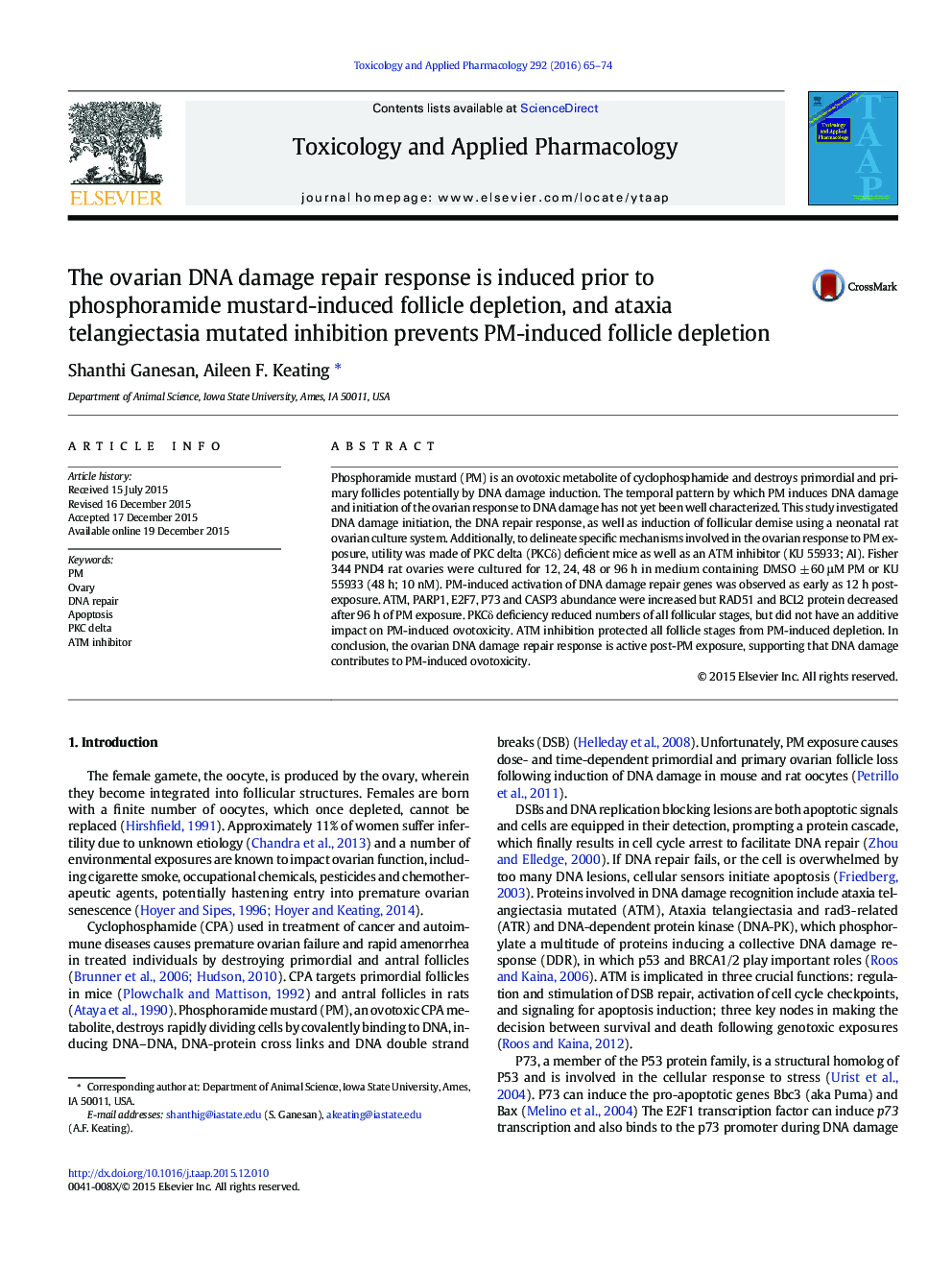| کد مقاله | کد نشریه | سال انتشار | مقاله انگلیسی | نسخه تمام متن |
|---|---|---|---|---|
| 2568148 | 1561170 | 2016 | 10 صفحه PDF | دانلود رایگان |

• PM exposure induces DNA damage repair gene expression.
• Inhibition of ATM prevented PM-induced follicle depletion.
• PKCδ deficiency did not impact PM-induced ovotoxicity.
Phosphoramide mustard (PM) is an ovotoxic metabolite of cyclophosphamide and destroys primordial and primary follicles potentially by DNA damage induction. The temporal pattern by which PM induces DNA damage and initiation of the ovarian response to DNA damage has not yet been well characterized. This study investigated DNA damage initiation, the DNA repair response, as well as induction of follicular demise using a neonatal rat ovarian culture system. Additionally, to delineate specific mechanisms involved in the ovarian response to PM exposure, utility was made of PKC delta (PKCδ) deficient mice as well as an ATM inhibitor (KU 55933; AI). Fisher 344 PND4 rat ovaries were cultured for 12, 24, 48 or 96 h in medium containing DMSO ± 60 μM PM or KU 55933 (48 h; 10 nM). PM-induced activation of DNA damage repair genes was observed as early as 12 h post-exposure. ATM, PARP1, E2F7, P73 and CASP3 abundance were increased but RAD51 and BCL2 protein decreased after 96 h of PM exposure. PKCδ deficiency reduced numbers of all follicular stages, but did not have an additive impact on PM-induced ovotoxicity. ATM inhibition protected all follicle stages from PM-induced depletion. In conclusion, the ovarian DNA damage repair response is active post-PM exposure, supporting that DNA damage contributes to PM-induced ovotoxicity.
Journal: Toxicology and Applied Pharmacology - Volume 292, 1 February 2016, Pages 65–74